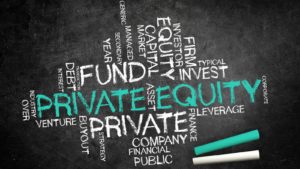In recent years, private equity profits have become so attractive that virtually anyone with significant assets is doing it: even former President Trump’s son-in-law, Jared Kushner.
Kushner’s Miami-based Affinity Partners’ most recent private equity investment was in Munich-based fitness technology company EGYM. Affinity was the lead investor in a $225 million Series F capital raise. Series F rounds are later-stage investments closer to a business undertaking an initial public offering.
Launched in 2021, Affinity raised more than $3 billion of funding to invest on behalf of its limited partners. That’s what private equity investors do. Holding a stake in the growing business, Affinity hopes to benefit from EGYM’s future IPO.
Private equity investing remains the playing field of the very wealthy. However, here are three stocks to buy that are relatively low-risk ways to make a retail investment in private equity.
Each company is extremely profitable and looking to buy in all economic environments.
Brookfield Corporation (BN)

Brookfield Corporation (NYSE:BN) is a relatively new creation from these brilliant investors. In December 2022, Brookfield Asset Management (NYSE:BAM) spun off 25% of its asset management business into a separate, asset-light, publicly-traded company.
The new asset management company took on the name and stock symbol of its parent. The parent changed its name to Brookfield Corporation, trades under the BN symbol, owns 75% of BAM, and manages more than $825 billion in assets across six operating segments: Renewable Power & Transition, Infrastructure, Private Equity, Real Estate, Credit, and Insurance Solutions. This leads the company to enjoy high private equity profits.
Because this is a private-equity focused article, the company’s private equity business has $139 billion in assets under management. The businesses behind these assets employ more than 105,000 people worldwide.
In 2022, the company acquired publicly-traded CDK Global, and took it private for $8.3 billion. The acquisition of the provider of software for automobile dealerships was too big for either its private equity investment funds or its Brookfield Business LP (NYSE:BBU) private equity subsidiary — Brookfield owns 65% of the firm — so it threw in $1 billion in equity to get the acquisition across the finish line.
That’s the beauty of the Brookfield ecosystem. It’s kind of like an all-wheel drive vehicle in that it throws power to the areas that need it the most.
Brookfield is capital allocation at its finest.
Blue Owl Capital (OWL)

Blue Owl Capital (NYSE:OWL) was created in 2021 when Owl Rock Capital Group and Dyal Capital Partners merged with Altimar Acquisition Corp., a special purpose acquisition company, and went public through the SPAC. In late 2021, Blue Owl acquired Oak Street Real Estate Capital LLC for $950 million. Today, Blue Owl manages more than $144 billion in assets. It’s a great example of private equity profits.
The combination of the three businesses mentioned above gives Blue Owl the ability to provide lending and equity solutions to middle-market companies. It offers its clients three major product lines: Direct Lending, GP Capital Solutions, and Real Estate.
Owl Rock brought the Direct Lending platform to the business. It manages more than $71 billion in loans and equity-related investments. Dyal Capital manages $49 billion in assets. It specializes in providing financing for hedge funds and private equity firms. In addition, it makes minority investments in these firms. Lastly, Oak Street has nearly $24 billion in assets under management. It acquires single-tenant real estate with triple-net leases for its clients. It is handsomely rewarded for its real estate asset management expertise.
Most recently, Oak Street partnered with GIC, the Singapore sovereign wealth fund, to acquire Store Capital for $15 billion. Store was a real estate investment trust that invested in single-tenant, triple-net lease real estate.
Compass Diversified Holdings (CODI)

Compass Diversified Holdings (NYSE:CODI) showed up on my radar years ago when it owned Fox Factory Holding (NASDAQ:FOXF), a company dedicated to manufacturing shock absorbers and other suspension-related automotive parts used to enhance the performance of snowmobiles, motocross bikes, etc.
Compass took Fox Factory public in August 2013, selling 8.57 million shares to the public at $15. Compass owned 75.8% of Fox before the IPO, and 53.9% after it was completed. In July 2014, Compass sold more of its shares, reducing its stake to 41.2%. It sold off the remaining shares by March 2017.
The next time I came across Compass was in early 2019, when it agreed to sell Manitoba Harvest to Tilray Brands (NASDAQ:TLRY) for $419 million Canadian Dollars. It made a significant profit from this three-year, majority investment in Manitoba Harvest.
The industry refers to this as the recycling of capital. The goal being to generate above-average returns over time. It did that with both of these examples.
On Sept. 1, 2021, it converted from a partnership to a corporation, making it easier for institutions to own its stock.
Compass currently holds controlling interests in 10 small and middle-market consumer and industrial businesses. The positions range from 54.9% for Lugano (jewelry) to 90.7% for Sterno (portable fuels).
On the date of publication, Will Ashworth did not have (either directly or indirectly) any positions in the securities mentioned in this article. The opinions expressed in this article are those of the writer, subject to the InvestorPlace.com Publishing Guidelines.
